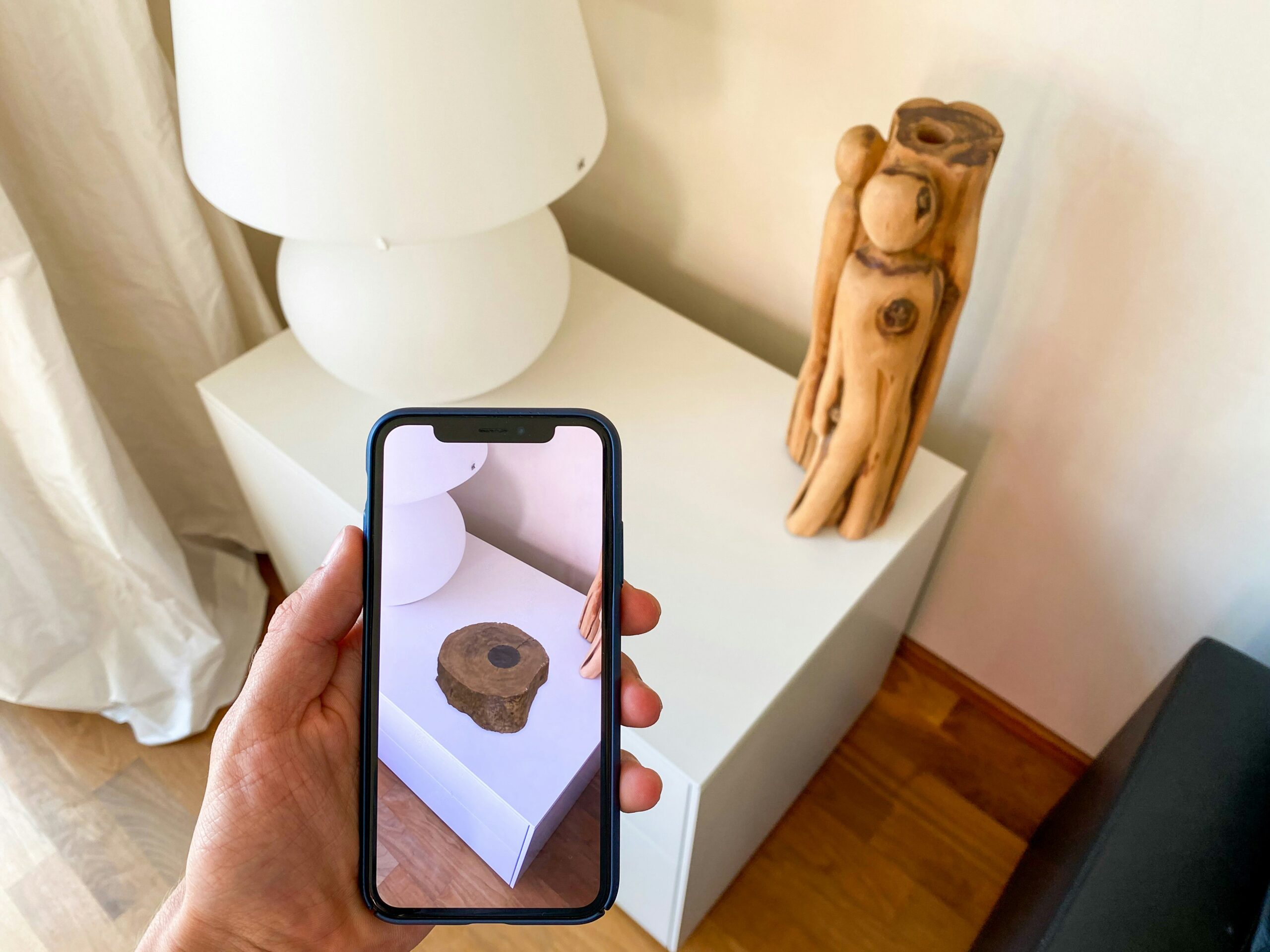
Photo by <a href="https://unsplash.com/@uniboa" rel="nofollow">UNIBOA</a> on <a href="https://unsplash.com/?utm_source=hostinger&utm_medium=referral" rel="nofollow">Unsplash</a>
In recent years, technology has advanced at an unprecedented rate, transforming the way we live, work, and interact with the world around us. One of the most exciting developments in this field is augmented reality (AR), a technology that blends the digital and physical worlds to create a new and immersive experience.
Unlike virtual reality, which creates a completely artificial environment, augmented reality overlays digital information onto the real world. This can be done through various devices such as smartphones, tablets, or specialized AR glasses. The result is a seamless integration of virtual elements into our physical surroundings.
Applications of Augmented Reality
Augmented reality has a wide range of applications across different industries. One of the most well-known examples is in gaming, where AR has revolutionized the way we play. Games like Pokémon Go have captivated millions of users by allowing them to catch virtual creatures in real-world locations.
But AR goes beyond gaming. It has the potential to transform industries such as education, healthcare, and retail. In education, AR can enhance learning by providing interactive and immersive experiences. Students can explore historical sites, dissect virtual organisms, or even travel to outer space, all from the comfort of their classrooms.
In healthcare, AR can assist doctors and surgeons in performing complex procedures. By overlaying medical images onto a patient’s body, surgeons can have a better understanding of the anatomy and make more precise incisions. AR can also be used to train medical professionals, allowing them to practice procedures in a realistic and risk-free environment.
Retail is another industry that can benefit from augmented reality. With AR, customers can try on clothes virtually, visualize furniture in their homes, or even see how a new car would look in their driveway. This technology not only enhances the shopping experience but also helps customers make more informed purchasing decisions.
The Future of Augmented Reality
As technology continues to evolve, the potential for augmented reality is only beginning to be realized. With the advent of 5G networks, AR experiences will become faster, more seamless, and more immersive. This will open up new possibilities for industries such as entertainment, tourism, and architecture.
Imagine being able to attend a concert from the comfort of your own home, with virtual performers appearing on your living room stage. Or exploring a city with a virtual tour guide, who can provide historical facts and stories as you walk through the streets. Architects can use AR to visualize and modify building designs in real-time, allowing for better collaboration and decision-making.
But it’s not just about the technology itself. The success of augmented reality will depend on its integration into our everyday lives. As AR becomes more accessible and user-friendly, we will see it being used in ways we can’t even imagine yet. It has the potential to change the way we work, communicate, and interact with the world around us.
Conclusion
Augmented reality is a technology that has the power to bridge the gap between the digital and physical worlds. Its applications are vast and varied, from gaming and education to healthcare and retail. As technology continues to advance, we can expect to see even more exciting developments in the field of augmented reality.
So, the next time you see someone wearing AR glasses or playing a game on their smartphone, remember that they are not just escaping reality, but rather embracing a new and enhanced version of it.

